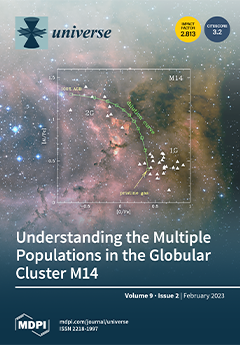We consider a cosmological model in the framework of Einstein–Cartan theory with a single scalar torsion
and reconstruct the torsion model corresponding to the holographic dark energy (HDE) density. By studying the corresponding relation between the effective energy density of torsion field
and holographic dark energy density
, we naturally obtain a kind of torsion field from the interacting holographic dark energy with interaction term
and
is the energy density of matter. We analyze the reconstructed torsion model and find that the torsion field behaves like the quintessence
or quintom (exhibiting a transition from
to
) dark energy, depending on the value of the model parameter
c. We then perform a stability analysis according to the squared sound speed. It is shown that the model is classically stable in the current epoch for the case of
. We also investigate the model from the viewpoint of statefinder parameters and it turns out that the statefinder trajectories in the
plane behave differently for the three cases of
c and also quite distinct from those of other cosmological models. From the trajectories of the statefinder pair
, we find that, for all the three cases of
c, the universe has a phase transition from deceleration to acceleration, consistently with cosmological observations. In addition, we fit the reconstructed torsion model with the recent Type Ia supernovae (SNe Ia) samples, i.e., the Pantheon sample containing 1048 SNe Ia with the redshift in the range
and the Pantheon+ sample with 1701 light curves of 1550 distinct SNe Ia in the range
. The analysis results show that the limits on the present fractional energy density of matter
are completely compatible with those of the
CDM model obtained from the latest Planck mission observations at 68% confidence level. The mean value of
c constrained from the Pantheon sample corresponds to the quintom-like scenario (i.e.,
) and its mean value from the Pantheon+ sample corresponds to the quintessence-like scenario (i.e.,
). However, both of the Pantheon and Pantheon+ samples cannot distinguish the quintom-like and quintessence-like scenarios at 68% confidence level.
Full article





